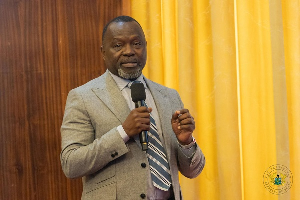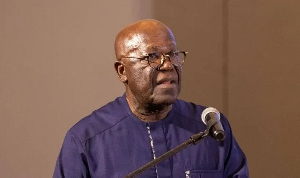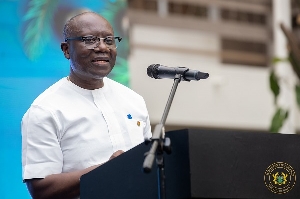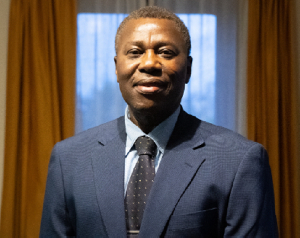A Ghana News Agency feature by Albert Oppong-Ansah
Jerigu (N/R), June 21, GNA- Water may be a cheap and easily accessible commodity to some communities the world, but the story is different, regarding the people of Hahagu, Jerigu, Cheko and Dalembila in the Northern Region.
Indeed, people, especially women and children in most rural parts of the region, struggle daily to get water.
Madam Ajara Iddrisu, 26, an expectant mother staying in Hahagu about 10 miles from the Tamale Metropolis, lamented to Ghana News Agency (GNA) that she walks two miles every day to the nearest dam at Jerigu to fetch untreated water for domestic use.
The woman, who is already a mother of two, said that animals and human beings compete for water in the dam, the only source of drinking water for the people.
Madam Iddrisu expressed fear that consumption of such water by the people could affect their health, particularly, pregnant women and their unborn babies.
The expectant mother told GNA that the situation was improving due to efforts by World Food Programme (WFP) to provide her community with clean water and said with excitement that “Our water situation is now better than before, thanks to the WFP for the expansion of the dam”.
The about 2,500 people living in the four communities are benefiting from a 900- meter square dug-out facility that was rehabilitated through the collaboration of Tamale South District Assembly and WFP.
The facility has the capacity of conserving water during the dry season, but the dug-out storage capacity decreased to less than a fifth of its normal capacity, when flash floods destroyed it in 2007.
Scarcity of water is one of the developmental challenges derailing the nation’s quest towards the prevention of diseases, especially water-borne infections, which require access to clean water for both rural and urban households.
The 2008 Ghana Millennium Development Goal report observed that the use of improved water sources is higher for wealthiest households (90 per cent) than for the poorest households.
In the 10 regions of Ghana, boreholes constitute the major improved source of water; followed by public taps, stand-pipes whilst only few households have pipe-borne water.
The study shows that rivers, streams, lakes and dams constitute the largest proportion of water sources in the Northern Region, while unprotected wells form the largest in the Upper East and Central regions.
The WFP under its climate change intervention initiative, “The Food for Assets Component,” has supported Government institutions to mobilise community members to rebuild vital community infrastructure, including water facilities, in Ghana.
Mrs Vera Boohene, Information Officer of WFP, told GNA that beneficiary districts mobilised community labour to work on small dams, dug-outs and plant trees, while WFP give the workers food for their participation in the communal projects.
She said: “For the hungry, every day is about finding enough food and water to survive. Poverty-stricken communities hit by floods or droughts are too busy looking for food to rebuild infrastructure vital for redevelopment.
“Providing food in exchange for work makes it possible for the poor and hungry to devote time and energy to taking the first step out of the hunger trap. Community members are given food in exchange for work on vital new infrastructure or for time spent learning new skills that will increase the food security of households or communities”.
Mrs Boohene said with support from Canadian International Development Agency, about 250 dams had been build across the Northern Region to support the livelihood of the rural folks.
Mr Sumaila Suhuyini, Assembly Member of Jerigu, told GNA that since the construction of the dam, seven years ago, it had not seen any rehabilitation, drastically reducing the volume of water it could store.
“We are just 10 miles away from Tamale but we do not have access to potable water, so it was really a sign of relief for the whole communities when we received news of the rehabilitation of the dam. We appreciate the support,” he said.
Mr Sumaila appealed to Government to support the communities to mechanise the dam for irrigation, to support all-year-round farming, and to treatment the water to make it potable.
Currently, world leaders and representatives of governments, the private sector and non-governmental organisations, are meeting in Brazil. to discuss how to reduce poverty, advance social equity and ensure environmental protection on an ever more crowded planet.
Due to bad economics or poor infrastructure, every year millions of people, most of them children, die from diseases associated with inadequate water supply, sanitation and hygiene.
Scarcity of water, poor water quality and inadequate sanitation negatively impact food security, livelihood choices and educational opportunities for poor families across the world.
Drought afflicts some of the world's poorest countries, worsening hunger and malnutrition and by 2050, at least one out of four people is likely to live in a country affected by chronic or recurring shortage of fresh water.
Amidst these problems relating to water, one would ask, what is being done globally and nationally towards providing water, which a vital commodity?
21/Jun/2012
Opinions of Friday, 22 June 2012
Columnist: GNA














